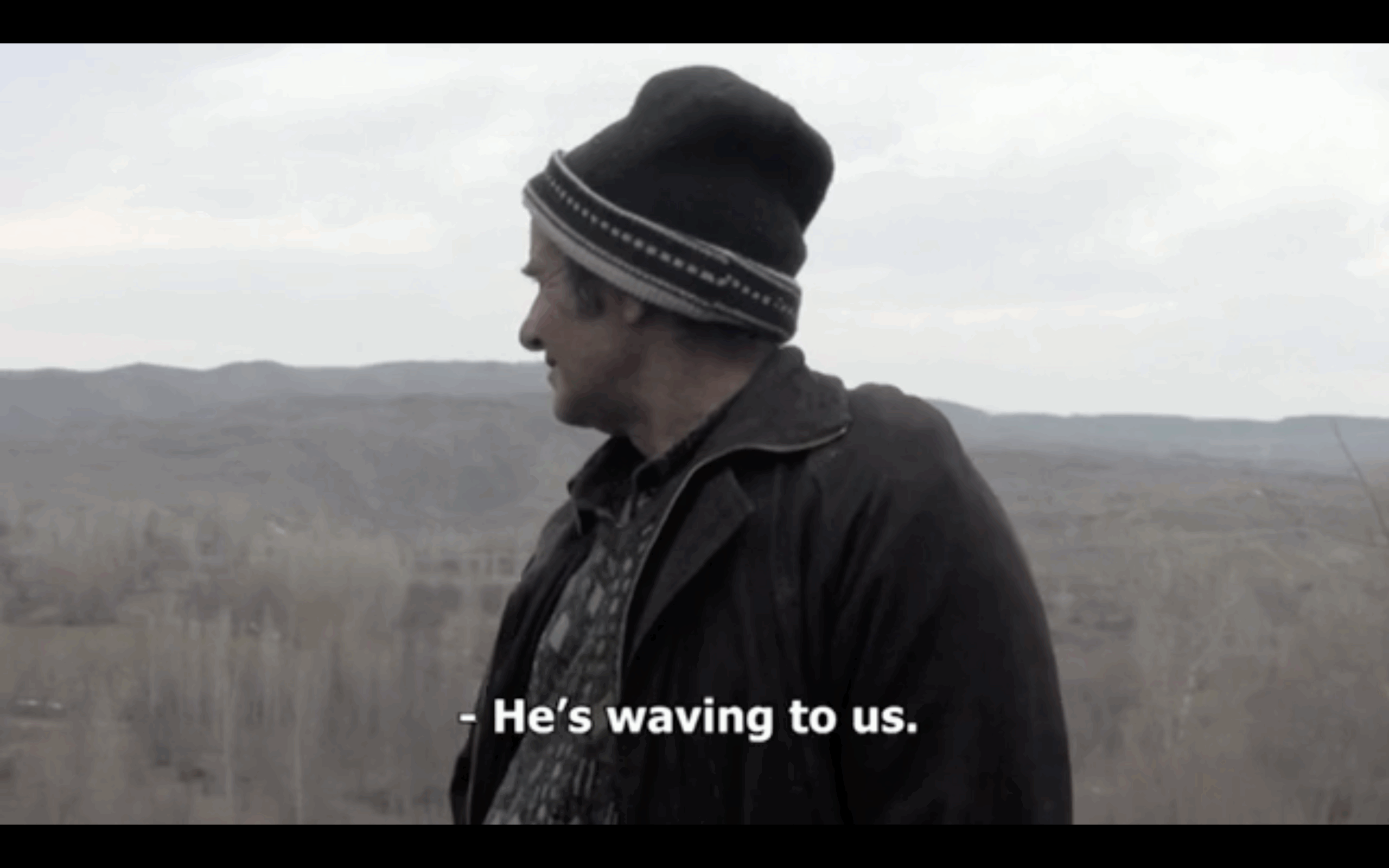Originally published in French on May 6, 2025

By Elodie Gavrilof
In front of the monastery of Khor Virap, facing Mount Ararat, the reality of the closed border is brutally obvious. Below, watchtowers line the road, guarding an area that is inaccessible without special authorisation and reserved for residents only. This striking militarisation is the physical embodiment of a border that has been sealed since 1993. On this scale, the evidence is unequivocal : a clear conflict. On both sides, symbols clash – the cross asserts the Armenian identity while the minaret proclaims the Turkish presence. Both sides seem frozen in mutual silence.
Yet a closer look reveals unsuspected nuances. Around the river, this narrow forbidden strip unwittingly creates a cross-border micro-space where unique dynamics emerge, escaping, at least to some extent, the official tensions between the two states. At the level of the river itself, another reality is emerging. Water, a resource without nationality, is a common good that transcends borders. Its joint management is crucial for the two riparian nations in this essentially agricultural region.
Common management of water resources
The Kars protocols, ratified in 1927, had already established the principle of joint management of water resources. In 1964, Turkish and Soviet authorities agreed to build the Arpaçay/Akhuryan dam, which was constructed between 1975 and 1980, before being brought into service in 1990. This water infrastructure now irrigates farmland in the Armenian provinces of Aragatsotn, Armavir and Shirak, as well as in the Turkish regions of Kars and Ardahan. This 54 km² reservoir has captured some 525 million m³ of water, administered jointly despite the absence of diplomatic relations between the two nations. In 2004, an inter-state commission on resource and infrastructure management was set up1On this subject, see in particular: UNECE. River basin commissions and other institutions for transboundary water cooperation: capacity for water cooperation in Eastern Europe, Caucasus and Central Asia. New York: United Nations Publications. 2009. (60p.). Although the resources are equitably distributed, each country has its own entry point for the irrigation systems – Sardarapat on the Turkish side and Talin on the Armenian side – in accordance with the provisions of the 1973 agreements that enabled the work to begin2Mehmet Altingoz, Suren Gevinian, Melissa McCracken, and Aaron T. Wolf. ‘Kura-Araks Basin: Water Quantity and Quality Management. Promoting Development in Shared River Basins: Case Study from International Experience. Washington: International Bank for Reconstruction and Development / The World Bank. 2018. (211 p.) page 12.
Although there is agreement on quantitative water management, no consensus has been reached on qualitative aspects. Despite the creation of this commission, a study published by the Institute for War and Peace in 2009 deplored the fact that the river was so polluted3SOGHOIAN Yeranuhi. ‘Pollution in Border Reservoir worries Armenia’. Institute for War and Peace. 8 May 2009. Link to article. From now on, researchers and engineers will meet periodically to work out a strategy for sustainable resource management between the five countries involved: Armenia, Azerbaijan, Georgia, Iran and Turkey. From 3 to 5 April 2024, Tbilisi hosted4Advancing EU Water Diplomacy in the South-Caucasus. April 2024. Link to the programme at the initiative of Farhad Mukhtarov, Senior Lecturer at the University of Rotterdam, and in cooperation with Koç University in Istanbul and the University of Ulu in Finland, a conference on water diplomacy led to the creation of a collaborative body, the South-Caucasus Water Academy Network (SWAN)5To find out more about the project: Link to the website. This platform will enable researchers from the five countries to work together on these issues, in partnership with other international experts.
Relations between people
On the banks of the river, the establishment of the exclusion zone has paradoxically given rise to a cross-border micro-space. Sibil Çekmen, a researcher specialising in border cinema, devoted her Master’s research to post-Soviet Armenian cinema and [the] representation of borders6Master’s 2 thesis in film studies defended at the University of Lyon II in June 2016. One of the sixteen documentaries studied on this occasion, Neighbors, directed in 2011 by Gor Baghdasaryan, was shot between Bagaran in Armenia and Halikislak in Turkey, at the confluence of the Araxe/Aras and Arpaçay/ Akhuryan rivers. Although mistrust reigns between the residents on either side of the river, they sometimes communicate. One Turkish resident told us that when animals got lost and crossed to the other side of the river, the Armenians would return them. At the end of the documentary, Armenians and Turks wave to each other across the river.
In the same vein, a number of major cultural and scientific initiatives have emerged around this singular area, the fruit of collaboration between Turkish and Armenian artists. The Hrant Dink Foundation, the Youth Initiative Centre in Gyumri, Galata Fotoğrafhanesi and Free Press Unlimited jointly orchestrated an exhibition entitled ‘Beyond Waiting… Stories from Turkey-Armenia border’, presented at the European Parliament in 2013. These collaborative projects, carried out regularly since the official closure of the border, illustrate the symbolic function of the Arpaçay/Akhuryan and Araxe rivers as a genuine link between the two nations.
Despite the official absence of diplomatic relations, the border as seen from the heights of the monastery of Khor Virap offers only a partial perception of a complex reality. As far as the inhabitants of this narrow cross-border area are concerned, although there does not appear to be any real dialogue, some sporadic interaction is nevertheless discernible. Even more significantly, these populations share the waters of the Akhuryan reservoir, a vital resource requiring concerted management between Armenians and Turks. The presence of a border crossed by a resource as fundamental as water inevitably generates bridges and dialogue, however tenuous. So, paradoxically, this river ultimately embodies a subtle but tangible vehicle for Armenian-Turkish dialogue, transcending official political barriers.
